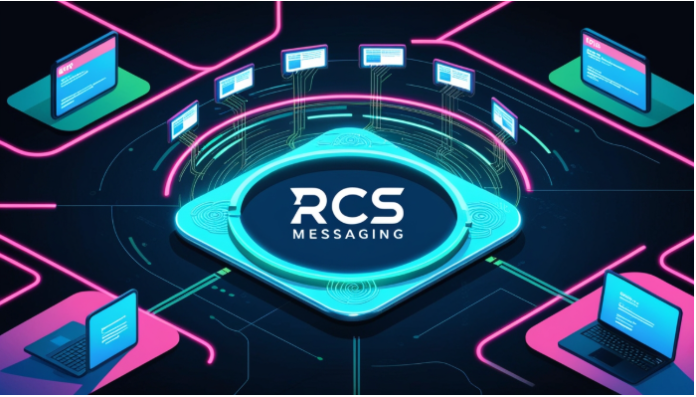In the ever-evolving world of mobile communication, Android users have long yearned for a messaging experience that rivals Apple’s iMessage — seamless, secure, media-rich, and deeply integrated. Enter RCS (Rich Communication Services) messaging, a protocol backed by Google and several telecom carriers worldwide. Billed as the future of text messaging on Android, RCS aims to finally bring parity to Apple’s much-loved iMessage.
But can RCS truly become the iMessage alternative for Android users? And where does it stand in comparison to third-party platforms like the WhatsApp API in terms of functionality, reach, and business usage?
Let’s dive into what RCS is, how Google is driving its adoption, and whether it can meet — or even exceed — the standards set by Apple’s messaging ecosystem.
What Is RCS Messaging?
RCS (Rich Communication Services) is a next-generation messaging protocol designed to replace traditional SMS and MMS. Unlike SMS, RCS supports:
- Read receipts
- Typing indicators
- High-resolution images and videos
- Group chats
- Rich cards with carousels and suggested replies
- Verified sender IDs and branding for businesses
Essentially, it brings the modern features of messaging apps like WhatsApp, Telegram, and iMessage to the native messaging app on Android.
Google’s Role in Pushing RCS Forward
RCS has been around for over a decade, but its rollout was fragmented and inconsistent due to telecom operators’ lack of coordination. That changed when Google stepped in, taking direct control by launching Google Messages with RCS support in 2019.
Here’s how Google is accelerating RCS adoption:
- Google Messages App
- Google is making its Messages app the default on many Android phones. It supports RCS out-of-the-box, eliminating reliance on carrier implementation.
- Jibe Platform
- Google acquired Jibe Mobile to provide cloud-based RCS services for carriers, simplifying deployment.
- End-to-End Encryption
- In 2021, Google rolled out end-to-end encryption for one-on-one RCS chats, enhancing privacy.
- Cross-Device Support and Rich Media
- Google continues to add features like emoji reactions, high-res media sharing, and integration with Google Photos.
This effort is finally unifying the Android messaging ecosystem under a single, iMessage-like standard.
RCS vs. iMessage: How Do They Compare?
Feature
RCS (Google Messages)
iMessage (Apple)
Platform
Android only
iOS/macOS only
Encryption
End-to-end (1:1 chats only)
End-to-end (1:1 and group)
Rich Media
Yes
Yes
Read Receipts/Typing
Yes
Yes
Works Over Wi-Fi/Data
Yes
Yes
Desktop Support
Web and Chromebook
Full macOS integration
Carrier Independent
Yes (via Google)
Yes (Apple servers)
While RCS has come a long way, it still lacks seamless integration across desktop and tablet devices, which is one of iMessage’s core strengths. However, the gap is narrowing rapidly as Google improves synchronization and feature parity.
RCS vs. WhatsApp API: Messaging for Businesses
For consumer-to-consumer messaging, RCS is catching up to iMessage. But for business messaging — promotions, support, automation — third-party platforms like the WhatsApp API still dominate.
WhatsApp API Strengths:
- Global reach: 2 billion+ active users worldwide
- End-to-end encryption by default
- Messaging automation with chatbots and workflows
- Integration with CRM and marketing tools
- Transactional and promotional message templates
- Multi-agent customer support infrastructure
RCS Business Messaging Strengths:
- Native Android integration (no app install needed)
- Rich media messages like carousels, buttons, and forms
- Verified sender branding and security features
- SMS fallback if RCS is unavailable
- Works in Google Messages app
The Challenge:
RCS Business Messaging is powerful but limited to Android and often requires carrier and device compatibility. Meanwhile, the WhatsApp API offers a universal solution across Android, iOS, and web, making it more scalable for global campaigns.
For now, most enterprises prefer WhatsApp API for customer engagement, while RCS is gaining momentum for localized, Android-centric campaigns.
Why RCS Might Be the Messaging Future for Android
No App Downloads
Unlike WhatsApp or Telegram, RCS works in the default messaging app, reducing friction.
Secure and Rich Experience
Google has improved encryption, verified business profiles, and multimedia support.
Brand Control
Companies can use logos, color themes, and call-to-action buttons — similar to email marketing but more interactive.
AI-Powered Enhancements
Google is expected to bring AI features like smart replies, message summarization, and context-driven suggestions to RCS.
Limitations of RCS Messaging
Despite its promise, RCS still faces hurdles:
- Platform Fragmentation
- While Google has streamlined much of RCS, not all Android users have Google Messages or RCS-enabled devices.
- iOS Incompatibility
- Apple has so far refused to support RCS, limiting cross-platform experiences. However, recent pressure from regulators and users could change this.
- Limited Business Adoption
- Businesses are still testing RCS Business Messaging, and adoption is slower than WhatsApp API or SMS.
- Reliability Issues
- Since RCS relies on internet connectivity and device compatibility, fallback to SMS is often needed — complicating the experience.
A Future with Coexistence: RCS + WhatsApp API
Rather than competing, the most powerful strategy for brands may be integrating both RCS and WhatsApp API into their omnichannel messaging strategy.
- Use WhatsApp API for international messaging, automation, and customer service.
- Use RCS for high-quality promotions, surveys, or support to Android users in key markets like India, Brazil, and the U.S.
- Seamlessly sync user data and engagement across both platforms via CRM integrations.
Messaging providers like MSG91 and Twilio already offer tools to orchestrate RCS, WhatsApp, and SMS from a single platform, helping businesses reach customers wherever they are.
The Outlook for 2025 and Beyond
As we move further into 2025, the lines between traditional messaging, OTT apps, and AI-driven conversations are blurring.
- RCS will continue to grow, especially in regions with high Android penetration and strong telecom partnerships.
- Google’s push for end-to-end encryption, device standardization, and AI enhancements will make RCS more appealing to both users and developers.
- Meanwhile, the WhatsApp API will remain the gold standard for global business messaging, supported by its unmatched reach and robust tooling.
If Apple eventually embraces RCS, it could finally unify the messaging experience across platforms. Until then, Android users can take comfort knowing that RCS, with Google’s backing, is becoming a viable and modern iMessage alternative.
RCS messaging represents a bold leap forward for Android’s default communication system, offering a rich, interactive, and secure alternative to outdated SMS. While it may not fully replace iMessage — or the business dominance of the WhatsApp API — it’s carving its own place as a modern communication protocol for both users and brands.
In a world where user expectations are rising, and businesses need to be everywhere their customers are, RCS + WhatsApp API may be the ultimate one-two punch in the messaging arena.

